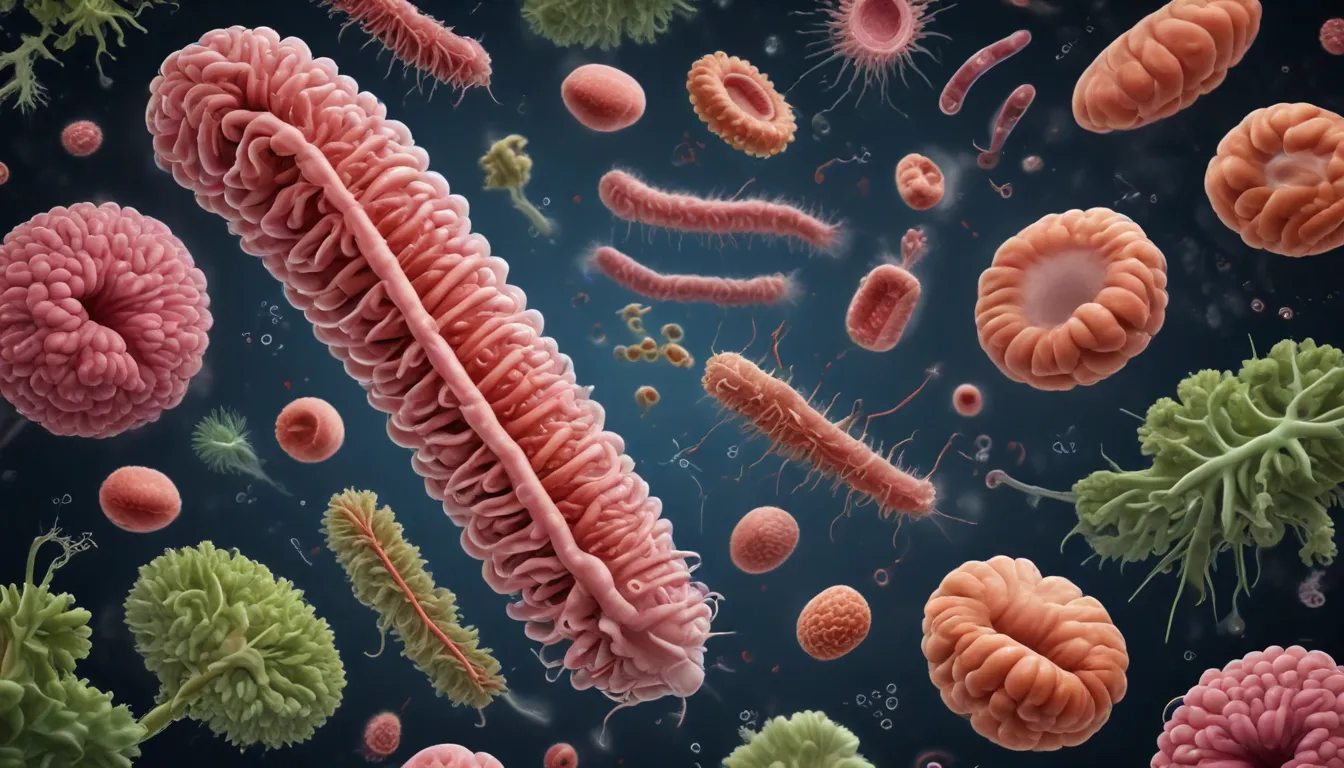A Note About Images: The images used in our articles are for illustration purposes only and may not exactly match the content. They are meant to engage readers, but the text should be relied upon for accurate information.
Welcome to a journey of discovery as we delve into the intriguing world of E. coli, a bacterial species that holds both beneficial and harmful properties. In this article, we will uncover ten essential facts about E. coli, its impact on human health, and measures to prevent infections. Join us as we explore the ins and outs of E. coli and its implications for our well-being.
Understanding E. Coli: A Microbial Marvel
E. coli, short for Escherichia coli, is a gram-negative bacterium that commonly resides in the lower intestines of warm-blooded animals, including humans. While most strains are harmless and even beneficial to our digestive system, some can cause severe illnesses. The presence of harmful E. coli strains in food and water sources poses a significant concern due to their potential to cause outbreaks and epidemics.
The Diverse Strains of E. Coli
E. coli is a highly diverse bacterial species with numerous strains that possess distinct characteristics. The strains associated with human infections are often called pathogenic E. coli. Notably, E. coli O157:H7 is infamous for causing severe foodborne illnesses, with other pathogenic strains including O26, O45, O103, O111, O121, and O145.
Foodborne Infections: A Common Consequence
Consuming contaminated food is a primary route of E. coli transmission. Raw or undercooked ground beef, unpasteurized milk, fresh produce, and contaminated water are common culprits. Pathogenic E. coli strains ingested through contaminated food can lead to symptoms such as diarrhea, abdominal pain, vomiting, and fever. In severe cases, complications like hemolytic uremic syndrome (HUS), which can result in kidney failure, may occur.
The Perils of Improper Food Handling
Inadequate food handling practices can increase the risk of E. coli contamination. Cross-contamination, where bacteria from raw foods are transferred to ready-to-eat items, is a prevalent cause. Practicing proper hygiene, such as thorough handwashing and separating raw and cooked foods, is crucial to prevent the spread of E. coli and other harmful microorganisms.
Outbreaks That Make Headlines
E. coli outbreaks occasionally make headlines due to their widespread impact. These outbreaks typically occur when contaminated food or water is distributed to a large population, leading to numerous infections. Notable outbreaks in the past have been linked to contaminated spinach, lettuce, ground beef, and raw milk. Such incidents underscore the importance of rigorous food safety regulations and vigilant monitoring.
From Farm to Fork: E. Coli Contamination Pathways
Contamination with E. coli can occur at various stages of food production. In agriculture, exposure to animal feces, contaminated irrigation water, and improper manure handling can lead to contamination. During food processing, tainted equipment or inadequate sanitation practices can also contribute. Understanding and addressing these contamination pathways are vital in safeguarding our food supply.
E. Coli Infections: Who’s at Risk?
While anyone can contract an E. coli infection, certain individuals are at higher risk of severe complications. Young children, the elderly, pregnant women, and those with weakened immune systems are particularly vulnerable. Prioritizing food safety measures and appropriate cooking techniques can help protect these populations from potential E. coli infections.
A Global Concern: E. Coli Worldwide
E. coli infections pose a global concern, affecting populations across continents. Developing countries face additional challenges due to limited access to clean water and sanitation facilities. International collaboration, along with education on food safety and hygiene practices, plays a pivotal role in reducing the global burden of E. coli-related illnesses.
Preventive Measures: Defense Against E. Coli
Preventing E. coli infections requires a multi-faceted approach. Promoting proper handwashing, implementing safe food handling and cooking practices, avoiding consumption of raw or undercooked foods, and ensuring water source cleanliness are essential preventive measures. Additionally, enforcing strict regulations and conducting regular testing in the food industry are crucial in minimizing E. coli contamination.
The Future of E. Coli Research
Continual research and technological advancements are enhancing our understanding of E. coli, including its behavior, virulence factors, and treatment options. Scientists are exploring innovative approaches like bacteriophage therapy and novel disinfection methods to effectively combat E. coli infections. These efforts hold promise for reducing the incidence and impact of E. coli-related diseases in the future.
Conclusion
E. coli, a microbe with dual roles in human health, requires our attention and preventive actions to minimize the risks associated with pathogenic strains. By following proper food safety practices, prioritizing hygiene, and raising awareness, we can reduce the likelihood of E. coli infections and their complications. Remember, knowledge and preventive measures are our strongest allies in safeguarding our well-being.
Frequently Asked Questions (FAQs)
What are the common symptoms of an E. coli infection?
Common symptoms of an E. coli infection include diarrhea, abdominal pain, vomiting, and fever. In severe cases, complications such as hemolytic uremic syndrome (HUS) may develop.
How can I reduce the risk of E. coli contamination in my kitchen?
To minimize the risk of E. coli contamination, ensure proper handwashing before handling food, separate raw and cooked items, cook meat thoroughly, and wash fruits and vegetables before consumption.
Can E. coli infections be treated with antibiotics?
In most cases, E. coli infections resolve on their own with supportive care and do not require antibiotics. However, severe cases or those with complications may necessitate antibiotic treatment.
Is it safe to consume raw milk or unpasteurized dairy products?
Raw milk and unpasteurized dairy products can harbor harmful bacteria, including E. coli. It is generally recommended to opt for pasteurized dairy products for safety.
How can I stay informed about E. coli outbreaks in my area?
Stay informed about E. coli outbreaks by regularly checking local health department websites, subscribing to food safety alerts, and following reputable news sources.
As you navigate the world of E. coli and strive to protect yourself and your loved ones from potential infections, remember that education and diligence are key. By staying informed, implementing preventive measures, and fostering a culture of safety, you can help combat the risks associated with this microbial marvel. Let’s work together to promote a healthier and safer environment for all.






